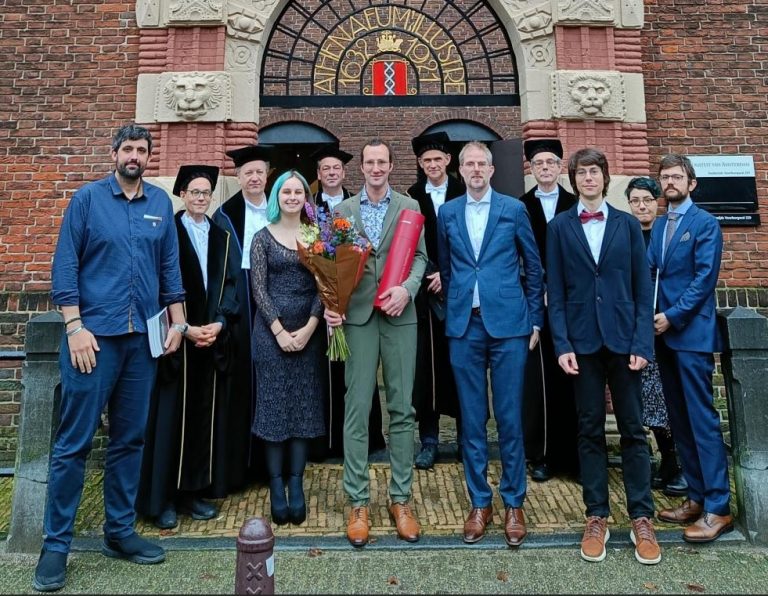Ph.D. thesis
Ultracold physics and ultracold chemistryby H. Hirzler (2022)*
This thesis studies single ions inside a radio-frequency trap interacting with ultracold neutral particles. During a collision, the ion can gain energy from the time-dependent trapping field, which limits the attainable collision energies. We mitigate this effects by using Yb+ ions and Li atoms, the elements with the largest ion-to-atom mass ratio that allow for straightforward laser cooling. With this combination, we demonstrate buffer gas cooling of a single ion to the edge of the quantum regime and we observe non-classical behavior in atom-ion collisions.
In a second experiment, we study cold chemistry between a single ion and ultracold
Li2 Feshbach molecules. The interaction leads to fast formation of LiYb+ molecular ions which we detect via mass spectrometry. We show that the reaction can
be used to detect as little as 50 molecules where the ion serves as a precise probe
for the properties of an ultracold atomic gas.
In a theoretical part we show, that the ion trap leads to the formation of quasi-bound states during an atom-ion collision. So called complexes increase the collision time and thus impact two- and three-body reaction rates. We find that complex formation is more frequent for similar masses and for colder mixtures and it is present even in the case of time-independent traps.
* This thesis has been co-supervised by Prof. Rene Gerritsma from University of Amsterdam in Amsterdam (The Netherlands).

Master's thesis
The dynamics of a single ion in a high density media: a stochastic approach by M. Londoño (2022)*
In this thesis, we study the dynamics of a single trapped ion immersed in a bath of ultracold atoms, considering an excess of micromotion. The dynamics of the ion are described using two different approaches. The first is related to a many-body perspective of the system where only the ion degrees of freedom are explicitly considered, while the bath degrees of freedom are encoded in a statistical noise. These considerations lead us to implement the Langevin equation of motion under different types of noise as a model for the ion dynamics. The second approach is based on a few-body perspective of the problem in which a Monte Carlo simulation is used to obtain information about the dynamics. Different information about the ion’s motion, the relaxation process, and the buffer gas cooling mechanism is obtained from these two frameworks. We found that these two formulations are complementary since they show different physical aspects of the harmonic characteristic of the ion’s motion and the final ion’s energy distribution. In fact, we have found criteria to establish when both formulations describe the same statistical results for the ion based on comparing the large energy tails of the energy distribution obtained from both formulations. Additionally, analytical expressions have been derived that fit the results from both distributions in the common regime.
* This thesis has been co-supervised by Prof. Javier Madroñero Pabón from Universidad del Valle in Santiago de Cali (Colombia).
The kicked rotor and its metric of chaos by C. Hamilton (2021)
The goal of this work was to find quantifiable metrics of the chaoticity of the classical kicked rotor (CKR) and the quantum kicked rotor (QKR). An analogy can be drawn between this and the work done on studying the phase transition from laminar to turbulent flow in fluid dynamics. In the case of fluid dynamics it is Reynolds number which is the important metric for quantifying the transition from ordered to chaotic behaviour. In the classical case we show that the fractal dimension of the phase space is a good metric, and for the quantum case we see that a combination of the energy and the localisation length can be used.
